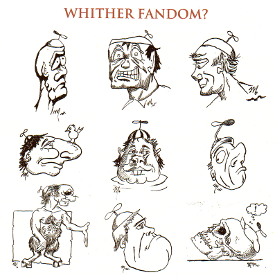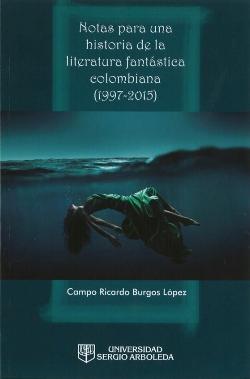
The striking cover in Figure 2, below, is by Jeffrey Kosh Graphics, and this guy in Figure 1 is he. According to his web page, Jeffrey Kosh is the pseudonym of writer and graphic artist Massimo Zini, who specializes in digital art. Free plug: if you’re looking for a cover for your new book (or movie) his rates are pretty affordable for a paperback. Anyway, I quite liked the cover. My review this week is an anthology which was edited by Texas writer Billie Sue Mosiman (Figure 3). Full disclosure: though I’ve never met her in person, I’ve known Billie for something like 25 years; we used to hang out together in one of CompuServe’s writing forums, where she was the Grande Dame, having published her first thriller, Wireman, in (I believe) 1983, where none of the other writers in the forum had yet published a book. So while I try to be dispassionate when reviewing works by friends—and I consider her a long-time friend—I just wanted you to know we have a history. Billie is now the author of about 14 books and a pretty fair number of short stories; not all are in the horror or thriller category.

So now there’s this anthology of horror stories by women writers, and Billie has edited it (it’s not her first anthology; she’s also edited anthologies with Martin H. Greenberg and David Drake). The important thing here is that all the stories are by women. In her foreword, Billie says that a disproportionate number of stories in most anthologies are written by men: “most anthology tables of content are heavily weighted toward male contributors. I cannot say why that is. From the number and quality of submissions to this book it’s not evident that women don’t write horror. They do. It’s not evident these stories they write aren’t up to standard. They are. I feel there’s some bias and if we’re being truthful I think we all know this is true. Yet women write horror just as well as men.” I neither dispute nor agree with most of those statements; in my many years of reading genre stuff, I must have read literally hundreds of anthologies, and from what I recall, most ToCs (Tables of Content) are indeed heavily weighted as she says. Even, I might guess, to anthologies like the Year’s Best Fantasies series edited by Terri Windling and Ellen Datlow, which I used to read regularly (apparently the series ended 8 years ago, dang it). It appears that most of the authors are male; however, there are a lot of women. Is it because, as Billie says, there’s “some bias”? I can’t see that anthologies edited by women, but free to include stories by men, would consciously or unconsciously have any bias toward or give favour to male authors. Maybe, just maybe, it’s that there are so many more submissions—good or bad—by male authors? Or not; I might be speaking—as my sister says—from a position of male privilege. (Fish probably don’t notice the water they’re swimming in.)
Regardless, there are good stories here.

Here’s the ToC for Fright Mares:
“Constance Craving”—Raven Dane
“The Goblin Box”—Hillary Lyon
“Tintype”—Elizabeth Massie
“The Whole of the Wideness of Night”—Nina Kiriki Hoffman
“Snow Angel”—Amy Grech
“Secrets of the Sargasso”—Morgan Griffith
“The Ouroboros Bite”—Marie Victoria Robertson
“Here I Lie”—Lorraine Versini
“Sakura Time”—Loren Rhoads
“Promises, Bliss, and Lies”—Rose Blackthorn
“Backslide”—K. L. Nappier
“City Girl”—Kathryn Ptacek
“What Storms Bring”—KC Grifant
“Pegasus”—Mara Buck
“Third Time’s a Charm”—Tonia Brown
“Ballerina – Sarah Doebereiner
“One Hour Before the Dark”—Mary Ann Peden-Coviello
“Dead Messengers”—Lucy Taylor
“Sin”—C.W. LaSart
“Sense Deprived”—Kristal Stittle
Of the twenty writers in this book (not counting the editor), I only knew the names of two: Nina Kiriki Hoffman and Kathryn Ptacek. So instead of reading the stories of those two (which I often do when opening an unfamiliar anthology), I decided to read the stories in order of appearance. (By the way, twenty stories is a pretty good deal for an anthology; many that aren’t “Best of” anthologies have something like fifteen or so. And the price is low; see below.) Because I believe there should always be surprises for the reader—and the reviewer’s job (as I see it) is to steer the reader towards or away from a book—I won’t touch on all the stories here. But there are some dillies, let me tell you.
Although “Constance Craving,” by Raven Dane, is well written, it’s what we used to call a “tomato surprise” story in our workshop: a trick ending, more or less, that the reader has already guessed. The protagonist is in an accident, and the story follows her until the reveal and the ending. Competent writing, but not one of the best in the anthology, either; however, this story is just setting you up for some great reading. “Goblin Box,” by Hillary Lyon, is more of a traditional horror story—but no spooks, slasher killers, witches in sight. A vain woman with few scruples and a penchant for thrift-store shopping finds something she could never have expected. The ending is excellent. With the second story, one can see the anthology is building… each story so far is a bit better than the previous one.
The third story, “Tintype,” by Elizabeth Massie, is set in the American Civil War, and involves the Union prison called Andersonville. By all accounts it was a hellhole; in many ways worse than some of the “Arbeit Machts Frei” type camps in Germany and Poland. Although the Southern prisoners weren’t targeted for extermination, this was the 1860s, and the welfare of prisoners was not under consideration, not to mention that there was little medical knowledge and no sanitation to speak of. There are no ghosts or goblins here, either, just the horror of man’s inhumanity to man…and no just endings for anyone, either. (Coincidentally, in high school I played “Dr. John C. Bates” in the play “The Andersonville Trial,” by Saul Levitt. Much of what Elizabeth Massie describes in this story matches what was in that play.)

“The Whole of the Wideness of Night,” by Nina Kiriki Hoffman, is sort of what we used to call “A Kiriki story” in our workshop (“Writers’ Bloc,” in Moscow, Idaho). Nina wrote more traditional short stories of various kinds, but the ones we really looked forward to—like the story she sold to Writers of the Future, way back when—were the Kiriki stories. These usually had a young girl as protagonist, and often involved the supernatural, or powers of various kinds. There was a certain “something” about a Kiriki story that lifted it above everyone else’s workshop stories (and I include my own stories). Since then (early 1980s), Nina has fulfilled my every expectation, writing over 300 stories and selling several novels and story collections, plus winning the Bram Stoker award and a Nebula and becoming a finalist for many other awards. This particular one is told as from a young girl from a dysfunctional family, whose brothers tease and prank her unmercifully, and whose parents do nothing to stop them. The ending is clever and unexpected, and involves a fortune-teller—or perhaps she’s a witch!
“Snow Angel,” by Amy Gretch, is another non-traditional horror story; there is only the chilling description of what terrible things can be wreaked by people who think they’re doing the right thing. (“I can say no more,” as they said in Help!) This one might stick with you a while. “Secrets of the Sargasso,” by Morgan Griffith, is a nice little H.P. Lovecraft pastiche. If you’re familiar with the Cthulhu Mythos, you’ll recognize a lot of what’s in here, brought up to modernity. What if one of the Whately descendents didn’t know about her heritage? What happens if rather than the Great Old Ones awakening, a human/hybrid becomes aware of what she could become? Many Lovecraftian pastiches are clumsy, but this one hits just the right note for me. “The Ouroboros Bite,” by Marie Victoria Robertson, shows what a competent writer can do with a hackneyed idea like alchemy and the search for—not the Philosopher’s Stone, but eternal life. I thought this one was very good. And “Here I Lie,” by Lorraine Versini, again has no supernatural elements. It’s somewhat along the lines of I Know What You Did Last Summer and a dozen other teenage movies… but what if there were no supernatural retribution for careless teenage actions? Somehow that is to me more chilling than a dozen mummies, vampires or werewolves.
And here I must stop describing the stories; it’s so tempting to keep on telling you about them, but I don’t want to spoil your party. Er, reading experience. If you like horror/terror/ghost stories, and the like, there’s something in this anthology for every taste, pretty much. Billie has done an outstanding job in selecting these stories. Whether there’s bias in anthologies is, I think, a moot question here, considering that a) these are all written by women and b) are all of such a high standard. Go. Buy. That’s my recommendation.
The book is available from Amazon.com (and, I guess, amazon.ca) as a paperback right now for $12.99; the Kindle edition is $4.99 (USD). Barnes & Noble has the paperback for $12.99 as well; their NOOK Book is $4.99. Apple lovers will find it on iBooks. For Canadians who want an ebook, Indigo’s Kobo version is $6.85. Of course it will be at your local retailer; if they don’t have it, special-order it!
AWARD NOMINATIONS are closing fast. I’m referring, of course to the Hugo Award and the Canadian Aurora Award. If any of my readers feel like (ahem!) nominating me for this (mostly) weekly column that I’ve been writing for 3 years now, please feel free! You do have to be a member of Sasquan or MidAmeriCon II to nominate; but if you can’t or don’t want to nominate me for whatever fannish category I fit in (“Best Fan Writer”), please consider nominating my wife, the Beautiful and Talented Lynne Taylor Fahnestalk, whose 2015 robot sculptures qualify her for Best Fan Artist. Just sayin’. To nominate for the Hugos—deadline is March 31!—go to https://midamericon2.org/the-hugo-awards/hugo-nominations/2016-hugo-awards-nominations/. And, since we’re Canadian, we’re also eligible for the equivalent Aurora awards. You have to be a member of CSFFA (the Canadian SF &F Association) to nominate or vote, but it’s cheap! https://www.prixaurorawards.ca/aurora-awards/nominate/ …and the nominations close TOMORROW (March 19) at midnight EST. As I say, only if you feel our efforts are worth a nomination. (End of self-promotion)
DEPARTMENT OF MORE WRITING STUFF: Because I’m a big fan of SF/F writing, and feel—even though it seems as if there are now tens of thousands of SF/F writers—that there is always room for one more, I have to plug another set of Pinterest pages, ranging from plot ideas and templates to storyboarding your novel and Ghu knows what else. Whoever you are, and whatever you’re writing, there is lots of help out there! You’re not alone, so check out these Pinterest boards. I’ll post more as I find it.
I’m always looking for comments on this column. I have a few regulars who comment frequently, but I know some of you have things to say that you haven’t said—so go ahead and register (if you haven’t already), then put a comment here, what do you say? Or comment on my Facebook page, or comment in the several Facebook groups where I publish a link to this column. I might not agree with your comments, but I love to get them. Please don’t feel you have to agree with me to post a comment, either. As always, my opinion is my own, and doesn’t necessarily reflect the views of Amazing Stories or its owners, editors, publishers or other columnists. See you next week!











1 Comment